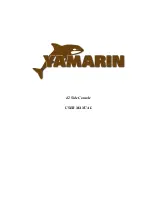
39
As you tack, let the boat start to roll towards you before you cross the boat,
and push the extension across in front of you, turning round forwards, and
sitting down again with the extension round behind your back. Swap hands
when you are settled, making use of the mainsheet cleat.
If the boat slows right down and feels lifeless when close-hauled, as a general
rule it pays to ease both sheets and bear off away from the wind for a while to
get the boat going again.
5.5 Downwind and gybing.
When sailing downwind both sails should be eased as far as possible, with the
same rules applying to the tell-tails.
When gybing you pull the tiller towards you, and again as you cross the boat
you push the extension across in front of you. The boom will often not want to
come across until you are well through the gybe so it often pays to give the
mainsheet a tweak to encourage the boom over at the moment you want it to
come! Swap hands after you are settled on the new gybe.
5.6 Using the spinnaker.
If you are inexperienced in using spinnaker then chose a fairly quiet day for
you first excursion with it. It will nearly double your sail area, and should be
treated with a healthy degree of respect!
For your first hoist you should be sailing downwind on a broad reach, with the
wind on your quarter. Your crew should sit in the centre astride the
centreboard case, and hoist the spinnaker from the right hand halyard block
(see picture 5.1).








































